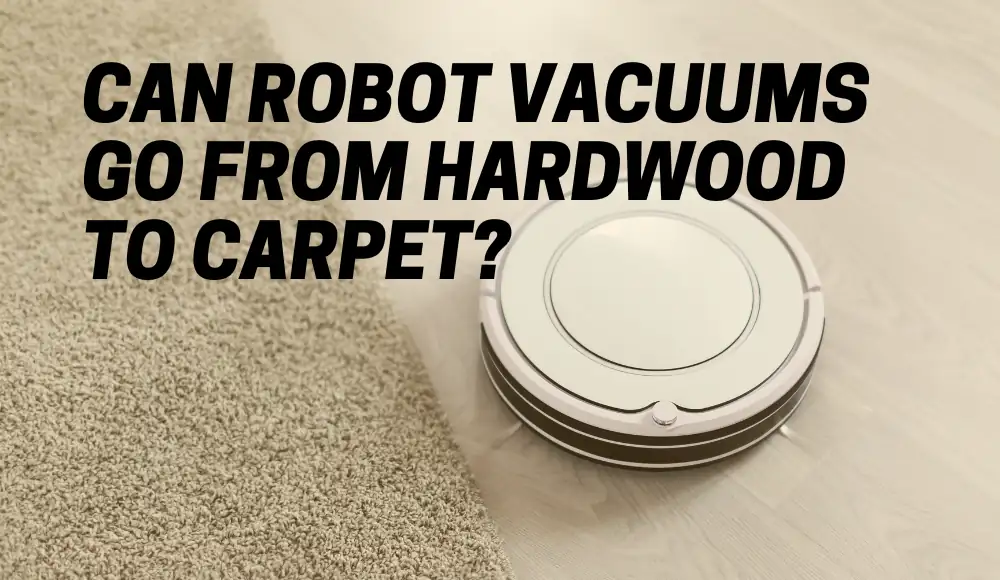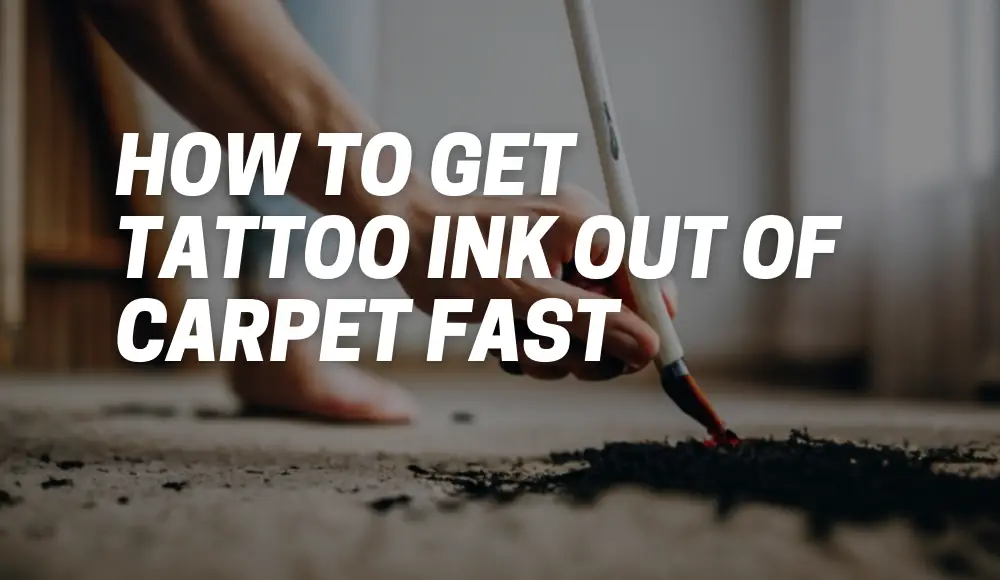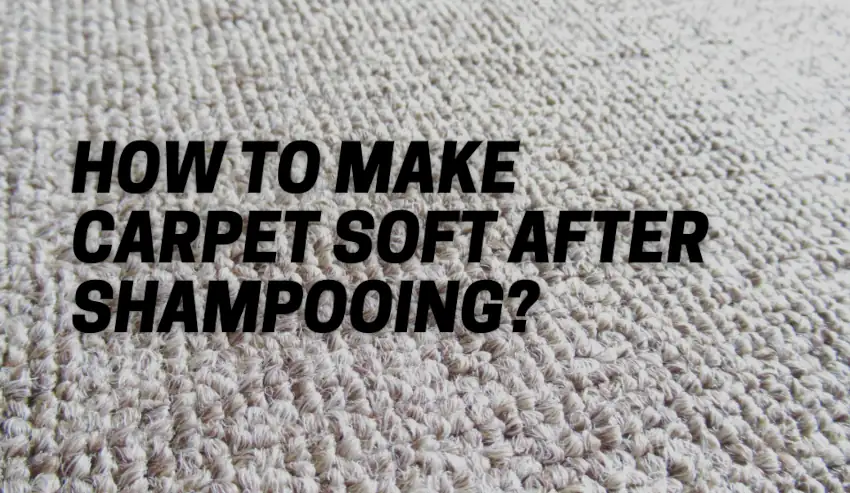Last updated on August 26th, 2023 at 03:00 am
In today’s fast-paced world, finding ways to simplify our daily chores is a top priority. That’s where robot vacuums come in, revolutionizing the way we keep our homes clean. These compact and intelligent devices have become increasingly popular, making household cleaning more convenient and efficient. But can robot vacuums go from hardwood to carpet?
Let’s explore this question and delve into the fascinating world of robot vacuum technology.
Can Robot Vacuums Go from Hard Floor to Carpet?
One of the primary concerns when considering a robot vacuum is its ability to move effortlessly between different types of surfaces.
Thankfully, most modern robot vacuums are designed to handle this transition smoothly.
Whether you have a hardwood floor, a plush carpet, or even a mix of both in your home, a reliable robot vacuum should adapt to these changes without any issues.
The secret lies in the advanced sensors and programming that these robotic wonders possess. Equipped with intelligent navigation systems, robot vacuums use a combination of sensors, cameras, and algorithms to map your home’s layout and determine the best cleaning path. This allows them to detect surface changes and adjust their cleaning settings accordingly.
When a robot vacuum encounters a carpeted area, it will often activate a higher suction power to effectively remove embedded dirt and debris.
Some models even feature specialized brushes designed specifically for carpet cleaning. These brushes agitate the carpet fibers, ensuring a thorough cleaning.
Types of Robot Vacuums
There are several types of robot vacuums on the market today:
- Circular robots: These are the most common type of robot vacuum. They are disc-shaped and use a combination of brushes and suction power to clean floors.
- D-shaped robots: these robots have a unique shape that allows them to reach corners more easily than circular robots.
- Multifunctional robots: Some robot vacuums can perform multiple functions besides just cleaning floors. For example, they may include mopping or UV sterilization capabilities.
- Pet-specific robots: These robots are designed specifically for pet owners. They have stronger suction power to pick up pet hair and may include a HEPA filter to reduce allergens in the air.
When choosing a robot vacuum, it’s important to consider your needs and the features that are most important to you.
Some models may be better suited for homes with pets, while others may be more efficient at cleaning carpets.
How Do Robot Vacuums Work?
Sensors and mapping technology
Robot vacuums are equipped with a variety of sensors that allow them to navigate their environment. These sensors include things like cameras, infrared sensors, and gyroscopes.
Some of the more advanced models even use lasers to map out the layout of a room.
These mapping technologies allow the robot vacuum to create a virtual map of your home and track its position within that map. By doing so, it can avoid obstacles like furniture or stairs and move around your home fairly autonomously.
Brush types and suction power
Robot vacuums come with different brush types depending on the model you choose. Some use spinning brushes while others have rubberized brushes that agitate dirt and debris. Both designs are effective at picking up pet hair, dust, and other debris.
Suction power is also important when choosing a robot vacuum. Higher suction power means that it can pick up more dirt in less time.
Some models also have adjustable suction power so you can tailor it to different surfaces like carpet or hardwood flooring. Overall, these features work together to create a highly versatile cleaning machine that can handle a variety of floor types with ease.
Can Robot Vacuums Go Over Transitions?
Transitions, such as thresholds or slight elevation changes between rooms, can pose a challenge for some robot vacuums.
However, many modern models are equipped to handle these transitions with ease. They utilize smart technologies that enable them to detect changes in surface heights and adjust their movements accordingly.
If you have a carpeted room adjacent to a hardwood floor, a well-designed robot vacuum should be able to traverse the transition smoothly. It will detect the change in surface elevation and make the necessary adjustments to continue its cleaning cycle seamlessly.
Some models even have larger wheels or specialized designs to help them navigate over transitions more efficiently.
Can a Roomba Go from Hardwood to Carpet?
Roomba, one of the most recognized names in the robot vacuum industry, has made significant advancements in its technology to ensure a seamless transition from hardwood to carpet. Roomba models incorporate intelligent sensors and mapping capabilities, allowing them to adapt to different floor types effortlessly.
When a Roomba detects a carpeted area, it adjusts its cleaning mode to deliver the optimal performance for that surface. It increases its suction power and activates the appropriate cleaning brushes to effectively tackle the dirt and debris trapped within the carpet fibers.
Roomba vacuums also come equipped with sophisticated cliff sensors to prevent accidental falls and collisions. These sensors enable them to detect stairs or other abrupt drops, ensuring their safety and longevity.
Can Roomba Go Over Rugs with Fringe?
Rugs with fringe can present a unique challenge for robot vacuums. The long fringes can tangle around the vacuum’s brushes, potentially causing damage or hindering its cleaning performance.
However, many modern robot vacuums, including Roomba models, are designed to handle this situation with care.
To prevent the fringe from becoming entangled, some robot vacuums offer a feature called “brushless extractors.” Instead of traditional brushes, these extractors use rubberized or silicone fins to agitate and lift dirt from the carpet or rug.
This design reduces the likelihood of fringes getting caught or tangled during the cleaning process.
If you have rugs with fringe in your home, it’s essential to choose a robot vacuum that specifically addresses this concern.
Look for models that offer brushless extractors or have mechanisms in place to avoid tangling.
Can Roomba Go from Tile to Carpet?
Tile and carpet combinations are quite common in many homes.
The good news is that Roomba, as well as other robot vacuum brands, can effectively navigate the transition between these two surfaces.
When a Roomba encounters a tile-to-carpet transition, it detects the change in surface type and adjusts its cleaning mode accordingly. It will increase its suction power and activate the necessary brushes to provide thorough cleaning on both surfaces.
Thanks to their intelligent navigation systems, Roombas can effortlessly move from tile to carpet and vice versa, ensuring your entire floor is kept clean.
How Big of a Transition Can a Roomba Handle?
Roomba vacuums are designed to handle various floor transitions, but it’s essential to consider the size and height of the transitions in your home.
While most Roombas can navigate smaller transitions, such as standard thresholds or low-pile carpet edges, larger and steeper transitions might pose challenges.
If you have significant height differences between your floors or large thresholds, it’s recommended to measure these transitions and compare them to the specifications provided by the robot vacuum manufacturer.
This ensures that the model you choose can handle the specific transitions in your home without getting stuck or causing damage.
Best Robot Vacuum for Floor Transitions
With the multitude of robot vacuums available on the market, it can be overwhelming to choose the right one for your home.
When it comes to handling floor transitions, several models stand out for their exceptional performance and adaptability:
- Roomba i7+: This model offers powerful suction, advanced navigation, and automatic dirt disposal, making it ideal for homes with various floor types and transitions.
- Neato Botvac D7: Known for its laser mapping and intelligent navigation, the Neato Botvac D7 seamlessly moves between different surfaces and adjusts cleaning settings accordingly.
- Eufy RoboVac 30C: This affordable option provides impressive cleaning capabilities and handles floor transitions effectively, making it suitable for smaller homes with mixed surfaces.
Remember to consider your specific needs, budget, and the layout of your home when choosing a robot vacuum that excels in handling floor transitions.
FAQs
Are robot vacuums worth it for carpets?
Absolutely! Robot vacuums offer numerous benefits for carpeted areas.
Their intelligent sensors and programming allow them to navigate and clean carpets effectively. They can agitate the carpet fibers, remove embedded dirt and debris, and maintain a clean and fresh carpeted surface.
Additionally, robot vacuums save you time and effort by automating the cleaning process, making them a worthwhile investment for any home with carpets.
In conclusion, robot vacuums have come a long way in terms of technology and functionality.
They can seamlessly transition from hardwood floors to carpets, navigate over transitions, and adapt to different surfaces in your home. With their intelligent sensors, mapping capabilities, and advanced cleaning features, robot vacuums like Roomba have become reliable cleaning companions for households worldwide.
Embrace this technological marvel, sit back, and let the robot vacuum handle your cleaning needs while you enjoy a clean and tidy home.



